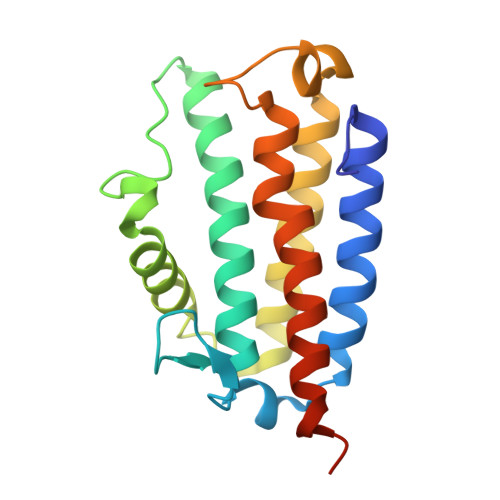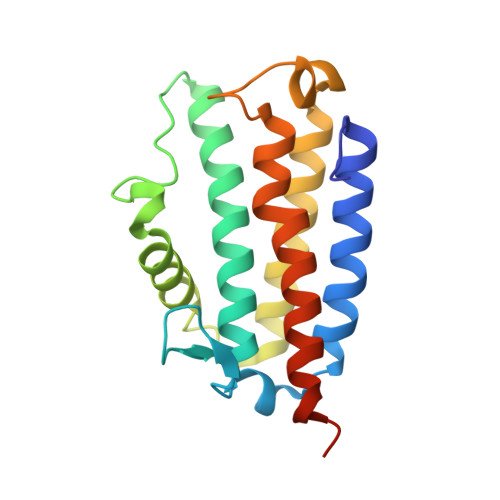ClbS Is a Cyclopropane Hydrolase That Confers Colibactin Resistance.
Tripathi, P., Shine, E.E., Healy, A.R., Kim, C.S., Herzon, S.B., Bruner, S.D., Crawford, J.M.(2017) J Am Chem Soc 139: 17719-17722
- PubMed: 29112397
- DOI: https://doi.org/10.1021/jacs.7b09971
- Primary Citation of Related Structures:
6ANR - PubMed Abstract:
Certain commensal Escherichia coli contain the clb biosynthetic gene cluster that codes for small molecule prodrugs known as precolibactins. Precolibactins are converted to colibactins by N-deacylation; the latter are postulated to be genotoxic and to contribute to colorectal cancer formation. Though advances toward elucidating (pre)colibactin biosynthesis have been made, the functions and mechanisms of several clb gene products remain poorly understood. Here we report the 2.1 Å X-ray structure and molecular function of ClbS, a gene product that confers resistance to colibactin toxicity in host bacteria and which has been shown to be important for bacterial viability. The structure harbors a potential colibactin binding site and shares similarity to known hydrolases. In vitro studies using a synthetic colibactin analog and ClbS or an active site residue mutant reveal cyclopropane hydrolase activity that converts the electrophilic cyclopropane of the colibactins into an innocuous hydrolysis product. As the cyclopropane has been shown to be essential for genotoxic effects in vitro, this ClbS-catalyzed ring-opening provides a means for the bacteria to circumvent self-induced genotoxicity. Our study provides a molecular-level view of the first reported cyclopropane hydrolase and support for a specific mechanistic role of this enzyme in colibactin resistance.
Organizational Affiliation:
Department of Chemistry, University of Florida , Gainesville, Florida 32611, United States.


















